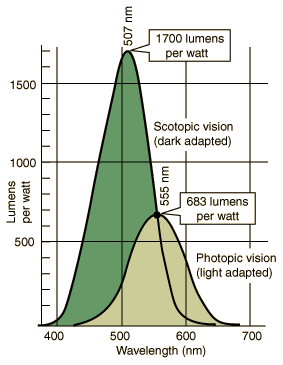Gyverpete -
Actually, based on the colors you claim to see, I believe what you are seeing in some cases is fluorescence of certain colors. These objects are absorbing the high energy turquoise light and re-emitting it - not reflecting it. Take out a magazine cover and look at it under the turquoise and it'll be turquoise, shades of turqouise grey, and black. Shine it at a package of fluorescent markers, or fluorescent highlighting drawn on a piece of paper and you should see the actual colors.
Also consider that although colored LEDs operate in a very narrow band of the spectrum, their spectrum rating is where the peak is - they're not 100% monochromatic. There is a little bleed over into other nearby areas of the spectrum.
Last, based on my own perceptions I have a difficult time putting faith in the results of your informal test. Were you guessing at the colors based on the fact that you knew what colors were in the package of pencils? You had to have seen them before the test and knew what colors were available... If you run the same test as a "single blind" test I bet you wouldn't get nearly as many right.
If you want to try it, here's how: Buy a brand new box of crayons - a big box. Have someone else pick 20 colored crayons, remove the wrappers, and put them in order in a shoebox so they can't change order. Have them record the colors in order. You take the closed shoebox into a completely dark closet and open the box, looking in with your colored light. Record the colors you see (not what you guess them to be, what you really see - this is VERY hard to do) in order and when done, compare your list with the actual colors that was kept hidden by your assistant.
Here's a pic of a box of 64 crayons under green light (I don't have turquoise, but this is pretty darn close and demonstrates the problem just as well.) What are the colors?
How about just the colors and order of the colored crayons printed on the box top?
If you don't know what the choices are, you can't guess and are left with describing them only as the colors you actually see, which is green, light green, dark green, and black.
Imagine trying to distinguish a red and a violet cable under this light...
Good questions and glad you like the site - it's there for people like you! /ubbthreads/images/graemlins/smile.gif








